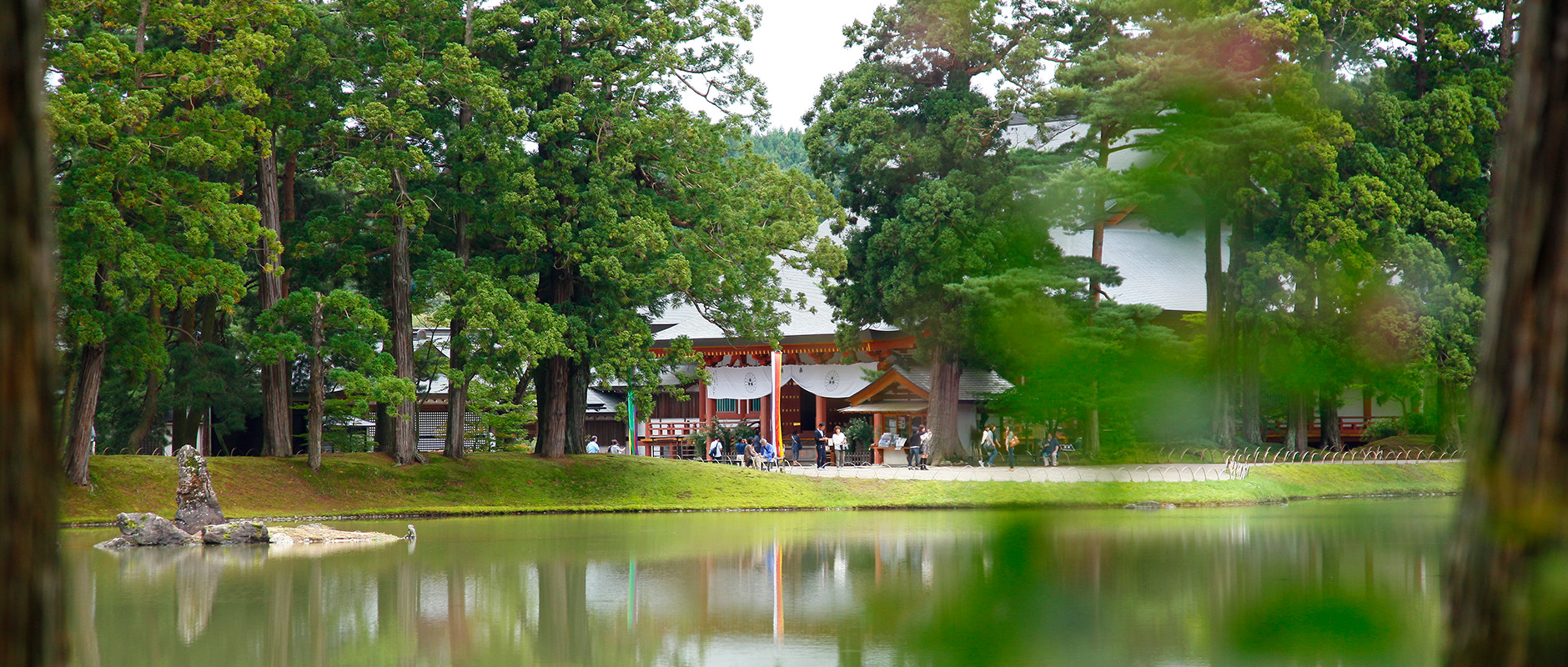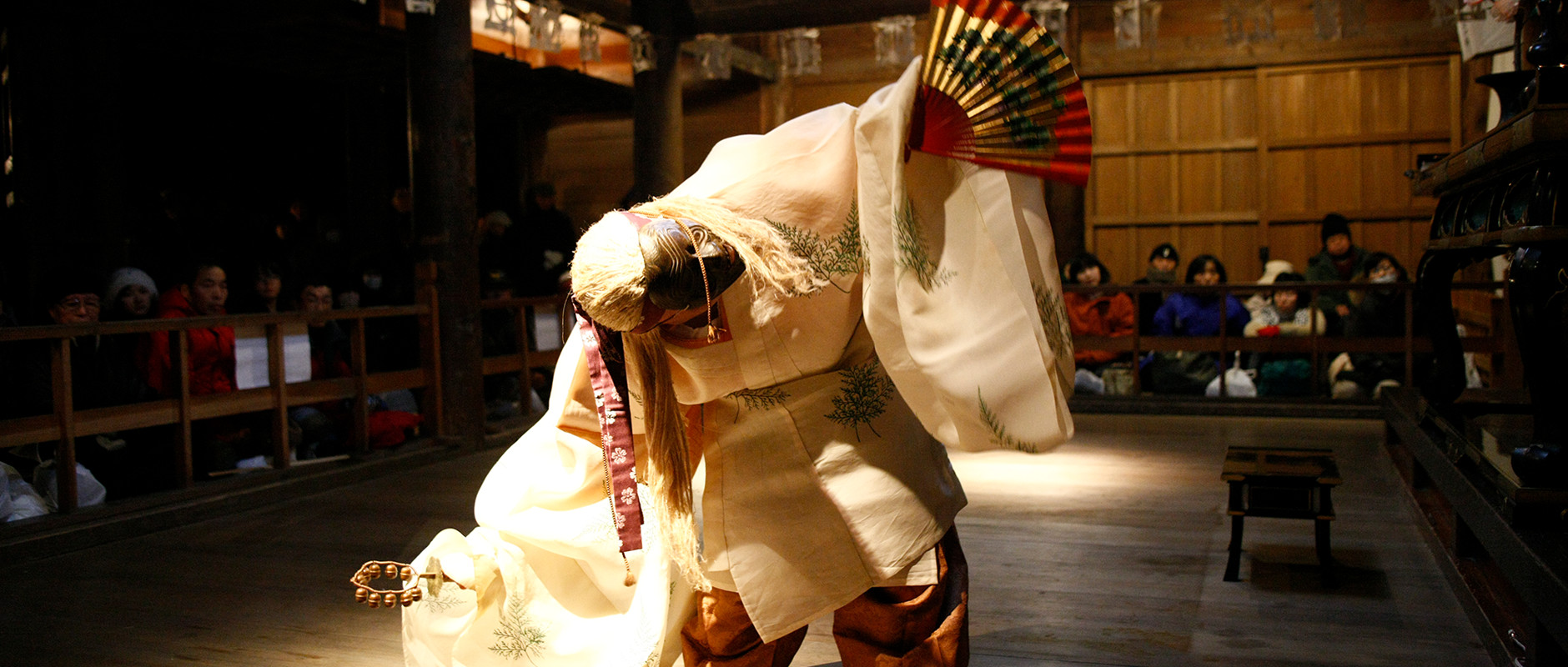About Motsuji Temple
The Origin of Motsuji Temple
Legend of the White Stag
The temple history records that in the year 850 the great priest Ennin (Jikaku Daishi), the third head abbot of the Tendai sect,
was traveling around northern Japan when he became lost in a thick fog in this area and was unable to proceed another step.
When Ennin glanced at his feet, he noticed the hair of a white deer lying there beside them.
Intrigued, the priest followed the trail of hair to find its owner, a white stag.
Ennin approached the deer, but it vanished into the fog.
In its place appeared a silver-haired old man who told the abbot,
"This is a sacred place. If you build a temple here, the Buddhist law shall surely spread among the people."
Ennin sensed that this old man was an incarnation of the healing Buddha, Yakushi, and followed his advice.
The priest built a hall, which he named Kashoji.
And that is the legend of Motsuji's founding.
History

Motsuji Temple was founded by Ennin (Jikaku Daishi), and much of the temple was built during the period from Motohira, of the second generation of the Fujiwara clan, to Hidehira, of the third generation of the Fujiwara clan. In ancient times, with 40 temple buildings and 500 priests' quarters, it was on a scale of size and splendor that rivaled that of Chusonji Temple. After the downfall of the Northern Fujiwara clan, all of the buildings burned down in a terrible disaster, but now, the Pure Land garden around Oizumi ga Ike Pond and the remains of the Heian period temples are maintained in nearly complete condition, and they have received designations as both special historical sites and special places of scenic beauty. A new Hondo (Main Hall), completed in 1989, is faithful to the temple's Heian era roots.
Ennen no Mai (Longevity Dance)

The dances performed after Buddhist services are referred to as ennen, meaning "longevity." More than ten dances, including the Old Woman (Rojo), Young Woman (Jakujo), Flower Folding (Hana-ori), and Imperial Envoy (Chokushimai) are preserved at Motsuji. Until the mid-1800s, a number of associated Noh plays were also performed, but were lost in the anti-Buddhist climate of the times. However, one of these plays—Todomedori—has recently been revived. Along with the ritual of samadhi by constant walking, Ennen no Mai has been passed down unchanged for more than eight centuries, and has been designated as an Important Intangible Folk Cultural Property.